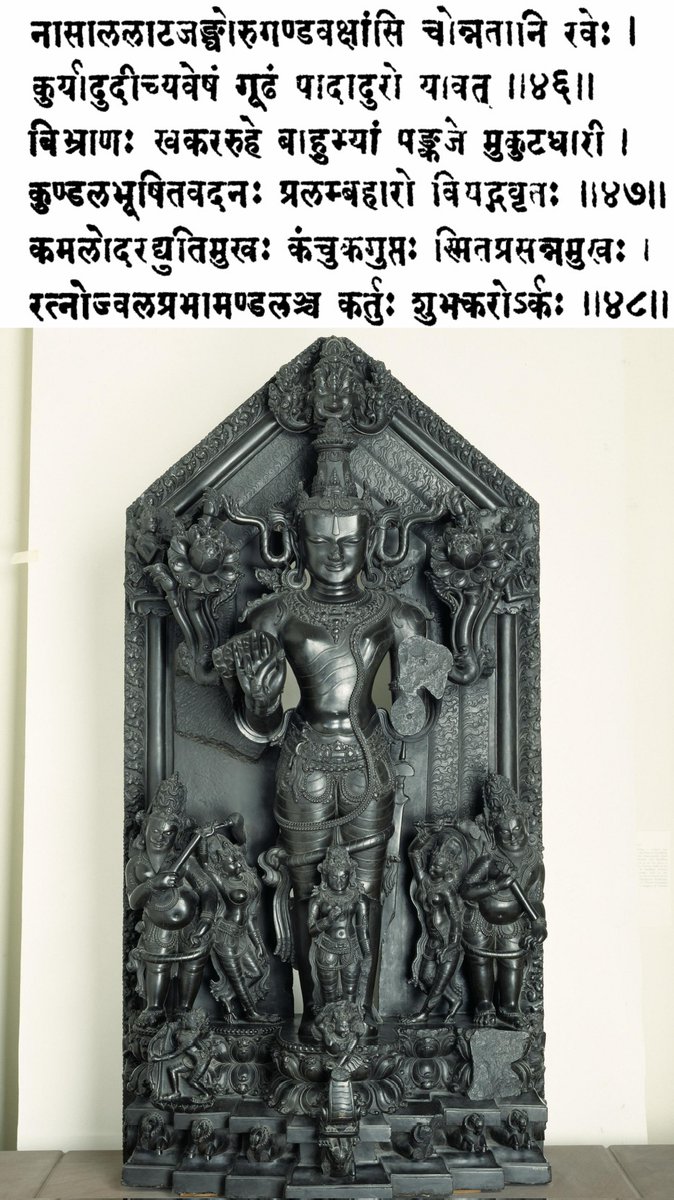
Brihatsamhita says Surya must be sculptured with 2 hands each holding a Kamala.His head is surrounded by a Kantimandala(halo).He wears a crown called Karandamukuta.He also wears a pair of Kundalas(earrings)made of ruby & Haara(necklace)made of pearls along with Katibandha(girdle) 

Surya should also be depicted wearing an Yajnopavita. He should be depicted standing on a Padma peetha(Lotus pedestal) which should be show drawn by a Ratha consisting of 7 horses. The Ratha of Surya is called Makaradwaja. This chariot has only one wheel.
Aruna is Surya's charioteer. He is shown commanding the 7 horses. The two female attendants waving the chamara(fan) are Rajani & Nikshubha. The male figures are Danda & Pingala are to be shown besides them.
Just below Danda & Pingala, we can see two more female figures (one on right is damaged) holding a Baana & Dhanusha. They are Usha & Pratyusha. Their actions are indicative of chasing away darkness. The female figure in the center is Chhaya devi.
• • •
Missing some Tweet in this thread? You can try to
force a refresh














